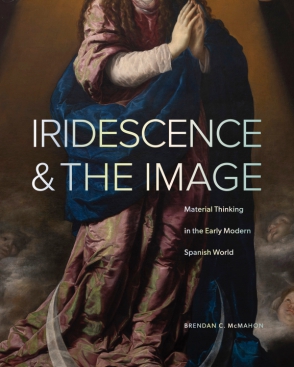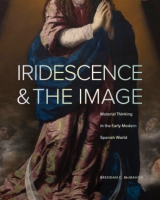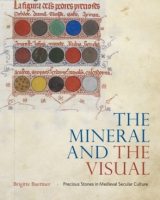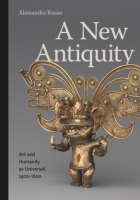
Iridescence and the Image
Material Thinking in the Early Modern Spanish World
Brendan C. McMahon
Iridescence and the Image
Material Thinking in the Early Modern Spanish World
Brendan C. McMahon
“In this imaginative study, McMahon shows how the dazzling but fleeting visual effects of iridescent materials prompted reflection on truth and deceit in the early modern Spanish world. Readers will find themselves looking at feathers, seashells, and swaths of shot silk in new and revelatory ways.”
- Description
- Reviews
- Bio
- Subjects
In Iridescence and the Image, Brendan C. McMahon explores this preoccupation with such materials—including shot fabric, hummingbird feathers, mother of pearl, and opals—in the early modern Spanish world. Taking the virtuosic renderings of tornasol (shot silk) by the Spanish painter Antonio de Pereda (1611–1678) as a point of departure, he shows that the ubiquity of these materials in a broad array of period cultural productions stemmed from the ways in which their unique properties undermined trust in visual perception—and in visual images themselves. Ultimately, McMahon argues, iridescence provided a way for people to grapple with profound questions about seeming and being, deception and revelation, and the nature of truth itself.
“In this imaginative study, McMahon shows how the dazzling but fleeting visual effects of iridescent materials prompted reflection on truth and deceit in the early modern Spanish world. Readers will find themselves looking at feathers, seashells, and swaths of shot silk in new and revelatory ways.”
“Brendan McMahon’s elegant and entirely original book reveals the ubiquity of iridescent objects—such as shimmering silks and feathers, which appear to shift color—in early modern collections. However, McMahon shows that these materials were also everywhere in period writings, used as potent metaphors about the deceitfulness of art and the unreliability of the senses. Around the motif of iridescence, the author builds a rich and innovative interpretive framework for understanding some of the period’s most pressing concerns about what and how humans see.”
Brendan C. McMahon is Assistant Professor of History of Art at the University of Michigan.
Mailing List
Subscribe to our mailing list and be notified about new titles, journals and catalogs.







